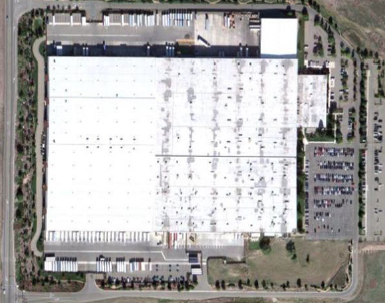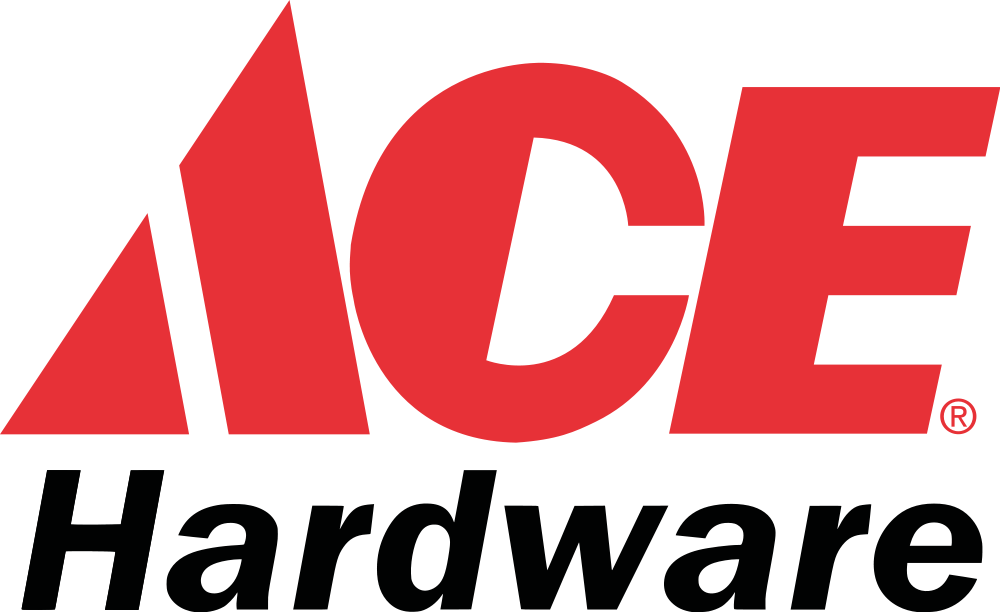Customer: Ace Hardware
Location: Rocklin, CA
Facility Size: 1,000,000 ft2 (92,903 m2)
Operational Schedule: 24 x 7
Environment: Distribution Center
Temperature: Ambient
Solution: 1,551 T5 luminaires & 102 Metal Halide luminaires
Partner: TRC Solutions
Deployment Follows Eight-Month PG&E Research Project Evaluating Impact of Increasing Levels of Integration and Control on Energy Efficiency
Widely known as ‘the place with the helpful hardware folks,’ Ace Hardware Corporation is the world’s largest hardware cooperative, with more than 4,850 locally owned and operated stores. Ace Hardware (Ace) stores can be found in all 50 states, the District of Columbia and approximately 60 countries. The company is headquartered in Oak Brook, Ill., maintains 14 distribution centers within the U.S., and has distribution capabilities in Shanghai, China; Panama City, Panama; and Dubai, United Arab Emirates. Founded 90 years ago in the Chicago area, Ace reported record sales and profits in 2013.
To support its mission to provide helpful, service-oriented assistance to its customers, the Ace network of distribution facilities includes a roughly 1,000,000 square-foot facility in Rocklin, California. Concerned about the high energy costs, maintenance burdens and low-illumination levels associated with its mixture of 400-watt metal halide and T5 fluorescent luminaires, the management team decided it was time to upgrade portions of the Rocklin facility to more efficient, better quality lighting. With 1,653 luminaires to replace (1,551 T5s, 102 metal halides), it would be a massive undertaking.
Large-Scale Study Conducted by PG&E Clarifies Ace’s Lighting Options
Intrigued, but uncertain, about the advantages of lighting systems with advanced controls, the Ace team reached out to its utility company, Pacific Gas & Electric (PG&E), to discuss lighting options. The result was an eight-month, in-depth research project conducted by PG&E at the Rocklin facility. Lead by PG&E partner, TRC Solutions, the project involved replacing 102 metal halide luminaires in a 44,800-square foot space to document the effects that increasing levels of control have on energy efficiency. The study concluded that:
- Systems with “aggressive advanced controls,” like the Digital Lumens system, delivered 43% more energy savings than basic LEDs.
- Systems with “aggressive advanced controls” delivered 93% more energy savings than traditional HID and HIF luminaires.
- The ability to centrally control settings and behaviors down to the individual luminaire level provided the highest level of savings.
- Even high-occupancy facilities offer plenty of opportunities to save massive amounts of energy through a combination of occupancy and daylight sensing with fine-tunable controls.
- In facilities with skylights and windows, like the Ace RSC, daylight harvesting sensors provided significant energy savings during daylight hours, and are an important part of a high-efficiency lighting system. Lighting must respond instantly to environmental inputs, turning on to full output fast enough to ensure the safety, comfort and productivity of the staff. Facility personnel quickly became comfortable with LEDs after seeing their high-performance capabilities. In the past, the facility’s HIFs with add-on occupancy sensors had been largely disabled due to long warm-up times and inability to illuminate quickly when needed.
By isolating the variables that contribute to energy efficiency and then evaluating them, both individually and collectively in a real-world scenario at Ace, the PG&E study documented and quantified the extraordinary energy savings that only highly integrated and controllable lighting systems can deliver to industrial facilities. PG&E chose Digital Lumens’ Intelligent Lighting System for its research because it was the only system on the market today that could both isolate, as well as aggregate, all the variables necessary to conduct its battery of tests.

Ace Moves Forward with Intelligent LEDs
Impressed with the results, the Ace team decided to upgrade more area of its facility lighting, including more than 1,000 fluorescent luminaires with add-on occupancy sensors, to the Digital Lumens System. By integrating occupancy and daylight harvesting sensors, wireless networking and controls into every upgraded luminaire, the Digital Lumens system enabled Ace to avoid the need to install, wire, and pre-configure third-party add-on sensors throughout the 1,000,000 square-foot facility. As a result, the Ace team reduced the time, materials and complexity of the project and eliminated those costs. And, because of the excellent light output from the Digital Lumens luminaires, they were able to reduce overall luminaire count for the project, further reducing costs while still maintaining light levels — even with luminaires dimmed.
Instead, integrated LightRules lighting management software enables the team to centrally control luminaire settings — individually, by zone, or facility-wide — without touching a luminaire. As a result, the Rocklin facility is:
- Saving an average of 81% of the energy costs associated with its legacy HID and HIF luminaires since the system was installed in October 2013.
- By replacing the facility’s 1,653 luminaires (1,551 T5 fluorescent and 102 metal halide), Ace Hardware has reduced its power usage per square foot by 39.56%, while improving light quality and illumination levels throughout the facility.
- Anticipating an investment payback of less than two years, with years of follow-on savings.
- More than tripling light levels in aisles and open spaces, from a low and uneven 5 foot candles to a consistent 16 foot candles today (with fewer luminaires and new luminaires dimmed to 70%), while more than quadrupling light levels on vertical surfaces, including the upper portions of high storage racks which were notoriously difficult to illuminate.
- Anticipating savings of more than $25,000 annually in re-lamping and re-ballasting costs via a maintenance-free luminaire that also eliminated the workplace disruptions associated with these maintenance events.
“During the PG&E research tests, we were stunned by the level of control over the lighting as it was programmed and re-programmed to execute the various tests, as well as by the visibility into how lighting was being used within our facility,” said Reid Barney, Facilities and Loss Prevention Manager for Ace Hardware. “With that information, we’ve managed to secure even more savings from wider deployment that followed the PG&E tests. It’s a seamless way of managing lighting and the results are undeniable – better, higher quality light and illumination levels at a fraction of the energy costs of our previous HID and HIF lighting.”
The Savings Are in the Details
The actionable information gleaned from LightRules — including from facility maps that visually depict occupancy patterns, light usage and concentration zones — provided Ace facility management with a complete, shift-by-shift picture of how lighting was being used within its facility. During the daytime, when facility personnel are focused on order fulfillment, for example, trucks rapidly pass through stocking areas as products are picked for individual stores. At night, the focus is on re-stocking and inventory management, with personnel remaining in confined zones of activity for extended periods of time.
The differing lighting needs associated with these widely divergent usage patterns are easily discernible on the LightRules facility maps and addressed by scheduled settings and lighting profiles. Using LightRules, Ace management created and saved different lighting profiles, such as “Order Fulfillment Shift” and “Night Shift,” to automatically change luminaire settings and behaviors depending on the time of day or week. For example:
- Shorter timeout settings are used when forklifts or vehicles are rapidly moving around the facility. Conversely, longer timeout settings are used at night when re-stocking confines personnel to specific zones of activity for longer periods of time.
- Rather than completely turning off lighting in unoccupied zones during high occupancy periods, the lighting is dimmed to 10% to provide background and egress lighting.
- During weekend night shifts and major holidays, when the facility is largely unoccupied, lighting is turned off except for security lighting, which is dimmed to 25% of full output until needed.
- Facility personnel appreciate the quality of the lighting, including the ability to more easily read individual product labels as they pick and re-stock items within the warehouse, an important attribute given the tens of thousands of products located on vertical storage racks and storage spaces throughout the facility.
“Before the eight-month PG&E test, I wasn’t convinced that integration and intelligence — or daylight harvesting, for that matter — would result in significantly higher energy savings than basic LEDs or fluorescent luminaires with add-on sensors,” continued Mr. Barney. “But the savings are real and accumulating quickly, generating massive levels of bottom line energy savings. To the benefit of our facility personnel and member stores, we are getting so much more out of our lighting, with a level of control that is as unique as it is easy to manage.”

